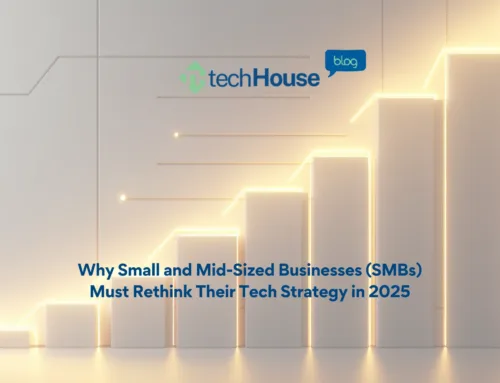Small and mid-market businesses always have to be careful about spending and try to squeeze every bit of value out of every cent. This approach frees us up to grow and survive times of uncertainty or downturns. Whether times are good or bad, we always want to ensure we’re spending our money in the most cost-effective way possible.
Sometimes, it can feel like a bit of a guessing game. Do we have the right tools in place? Do we have the right amount of each tool? Are we possibly buying the same thing twice? It’s not always clear. This blog post is intended to provide a framework for consolidating your stack for relatively non-technical people. If you’re an executive or leader within your organization, wondering what you should think about and ask about to ensure meaningful consolidation, this blog post is for you.
First, we need to think about the services to consider when it comes to consolidating the stack. There are six that I’d like to talk about: cloud storage, email and calendar, video conferencing and telephony, contact and sales management, data analytics, and project and work management.
Six Cost and Time Savers
Cloud Storage is a great one because it’s easy to understand. Many organizations have Microsoft 365, which includes OneDrive and SharePoint. Yet, they may have individuals using Dropbox, even the free version, in their company. In any case, that third-party product, whether Dropbox or something else, most likely hasn’t been secured and doesn’t have the same protections as the rest of their environment. This also refers to the shared responsibility model: you’re responsible if the environment gets hacked through your ID or the configuration is messed up. The third-party provider is not guaranteeing your environment will be safe but rather securing the areas they’re responsible for.
Years ago, sharing files securely with external users on the Microsoft platform was difficult. That’s no longer true. At that time, it wasn’t apparent to everyone that the third-party provider they were using might not have had the required security controls.
When thinking about security, consider on-premises servers. Some applications may have moved to the cloud, eliminating the need for those servers. We had a customer who didn’t realize they could leave the server behind and log in using the online version of Microsoft’s cloud.
Many of us use Outlook Calendar to send and receive invitations to meetings. However, we need another alternative when we want the public to see our calendar. Microsoft Bookings, included with Business Premium, allows sharing your calendar.
When it comes to holding meetings, Teams has made tremendous advances. A friend recently mentioned they were still using Zoom because they knew the product well and it could do transcripts, albeit only if she remembered while the meeting was being recorded. Now that they have started using Teams, they want to switch to that platform. Switching to Teams or Webex may make sense if you’re using Zoom. Teams offers an out-of-the-box version and additional features like telephone calls (domestic and international), webinars, and even town halls for up to 10,000 attendees if you want to think big 😊. Teams is the foundation for this, including collaboration tools.
You may use SharePoint or OneDrive to store your files and another product like Salesforce to manage your contacts. But your emails, tasks, and files are all in Microsoft. Why not move the contacts there, too? With Power Platform, you can create custom workflows, cloud integrations, and more.
With Power Platform, you can combine data from many other tools for reporting. If you’re using another platform for reports, consider Power Platform or even Power Query within Microsoft Excel.
Device and Patch Management is a powerful feature not often used in Business Premium. If your current MSP does not offer this option today, consider exploring other options to maximize your investment.
What is Not a Good Candidate for Consolidation?
Some software is best served outside of your Microsoft Cloud. Although SharePoint has a recycle bin and Exchange has optional archiving, we recommend utilizing a third-party backup.
Next Steps
We recommend the TechHouse Blueprint process to move projects forward. The TechHouse process starts with a diagnostic—asking a series of questions to uncover the most meaningful outcome of this change. Is it reducing product costs? Increasing efficiency? Improving security?
When you have a clear and measurable purpose, the next step is to design the consolidation. Work with someone familiar with the tools to identify how each can meet your needs. Depending on the size and scope of your needs, this could take less than an hour, a week, or more of effort. At this point, you are typically about 1/4 the way through the project. Next up: configuring the tools, migrating any information, training the team, and benefiting from the solution.
Innovative Solutions. Practical Software. Friendly Support.
Schedule a call | View Upcoming Events | Access our TechHouse Library of Articles





